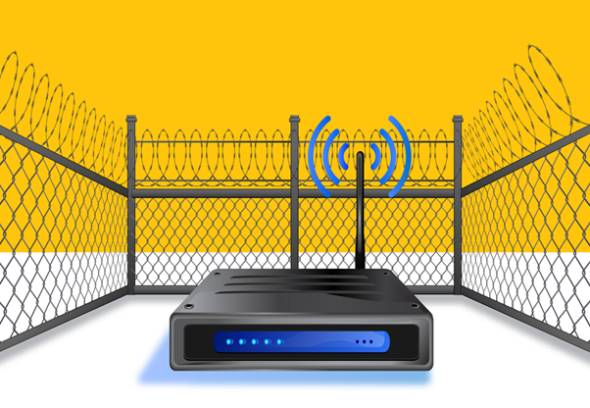Fixing Wi-Fi Connections Security
From February-August 2022, hackers, primarily Russian, intensified attacks on providers’ and home networks in the Western hemisphere. They aimed to restore the transmission of misinformation to the audience worldwide. But that’s not only the single aim. Blackmail and personal data are widespread in the world.
Weak security on home WiFi networks is a common way that hackers target unsuspecting internet users. So how do you fight against it? Let’s study this question of how to fix WiFi security to secure your devices and your family.
What is Wi-Fi?
Wi-Fi is a radio network delivering the signal to the receivers on short distances sending data. Modern phones, tablets, and computers have an inboard Wi-Fi connector to contact the router. If the device hasn’t it or needs boosting for confident reception, the user can deploy adaptors. Or choose one of two bands – 2,4, or 5 GHz.
Network advantages
- Quicker data exchange. The devices at home synchronize at speeds of 300 Mbps or faster. Besides, they don’t need wires to connect.
- Freedom of exploiting the Internet in the signal range. Move the PC throughout the apartment without being afraid to lose connection.
Is Wi-Fi a secure way to transmit?
Theoretically, yes, but it’s possible to intercept the signal. Traditionally it sends encrypted signals containing the people’s queries and the website’s content. But these securing network measures aren’t enough because the hackers use different software to read the streams. The unauthorized clients can change the router settings in their favor or reduce the total speed. Or use it for fraud purposes.
How to increase the safety of the home network
The most vulnerable device is the router. It’s responsible for the file and data transmitted between the devices in the home and office. That’s the system heart that needs corresponding protection.
The first piece of advice to fix WiFi security is a regular software update. It contains the system settings and has a current threat roster. Any DDoS attack doesn’t disturb you. Then check the password used to connect to the Internet and change it every quarter to protect the home network. If the Wi-Fi belongs to the office or public place, this frequency is monthly or biweekly.
My favorite thing is to try to test entering the router’s home page and even try to join its control panel. I don’t intend to change the settings or break the Internet connection, but understand how their administrators protect the network. But what if the visitor collects these data and sends them to particular databases containing the list of equipment with unchanged default settings?
It increases vulnerability. Unauthorized users reduce the speed, reroute the traffic or even spy on what you are doing in bed with that girl from the shop while your wife is on night shift. To avoid this, change it if the provider allows that function. Some providers and manufacturers restrict it.
Dual-band Modems
The dual-band modems have the advantage of splitting the audience. For example, the home users connect on 2,4 GHz, and the guests or major consumers use the 5 GHz band. That measure allows us to estimate who causes harm to all other clients. I expect that you’ll use different passwords for these networks.

Some routers offer antivirus and antispam options. It’s a great addition to the newest WPA3 standard of protection. These ideas will improve the security of your territory. The essential feature is parenting control. It protects the children from undesired content.
Today cybercriminals try to use personal devices in their illegal practices. That is, the personal computers are under threat Wi-Fi says weak security too.
AirPlay and CarPlay Security Issues
Even Apple’s popular media streaming and vehicle integration protocols harbor potential security vulnerabilities that often go overlooked. These technologies rely on Wi-Fi connectivity to function, creating additional attack surfaces for malicious actors. Security researchers have identified weaknesses in authentication mechanisms that could allow unauthorized devices to connect, potentially enabling man-in-the-middle attacks or unauthorized content streaming.
When CarPlay operates over wireless connections, it expands the vehicle’s attack surface beyond physical access, potentially exposing sensitive vehicle data and entertainment systems. Users should ensure their devices have the latest security updates and use strong Wi-Fi network security when utilizing these services to mitigate these risks.
Wrap Up
Even children are at risk when playing games online. The IoT is still interesting for hackers as these items bring information about customers’ lifestyles and preferences. As a result, it gets spam. They have inner vulnerabilities allowing them to perform the undesired actions.
In addition to classic actions, include to the checklist:
- Regular operating system security updates on the personal devices;
- The highest parenting control settings won’t be excessive even if the family has no children;
- The routers with protective add-ons are more expensive but secure too. Don’t refuse to protect the home or office environment.










